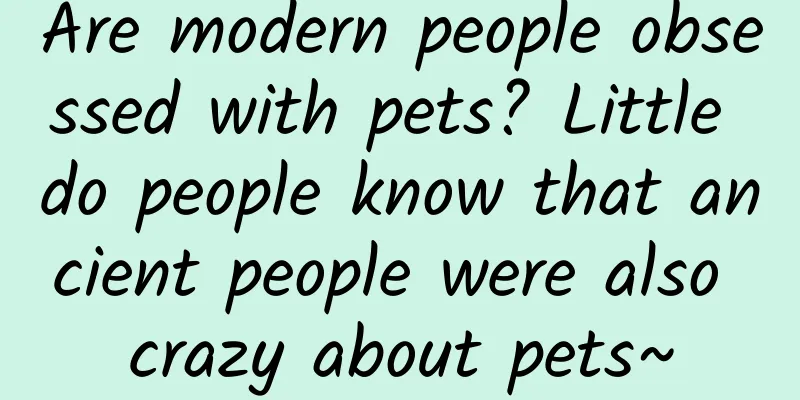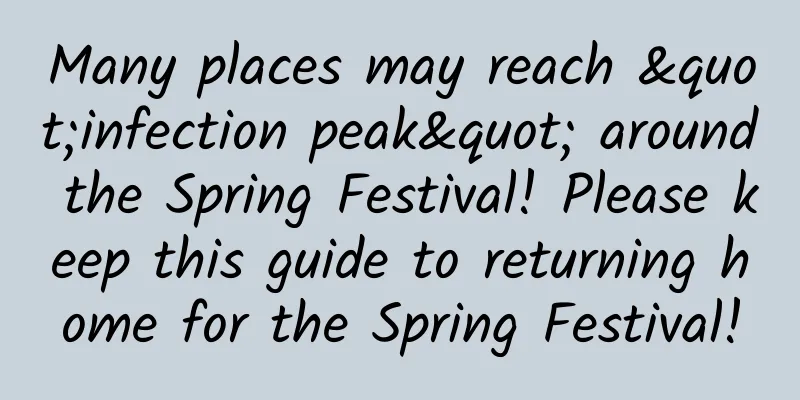Are modern people obsessed with pets? Little do people know that ancient people were also crazy about pets~

|
According to the data from the "White Paper on China's Pet Industry in 2023-2024", the number of Chinese families with pets has exceeded 100 million, and the number of pets is still increasing year by year. Not only do young people love to keep pets, but they are also paying more attention to the emotional value and quality of life of pets themselves. Back in the past, the ancients were not to be outdone - from the royal court to the common people, keeping pets was very popular. The relationship between people and pets is more of an emotional one, and keeping pets has become a leisure way for people to relax and cultivate their nature. So what kind of pets did the ancients keep? What kind of relationship did they have with their pets? In this regard, we will take you back to ancient times to find out~ 1. Horse Lang Shining's Scroll of Horse Herding in the Countryside, Qing Dynasty (Partial) Image source: The Palace Museum People today may think that horses are an "atypical pet," but in ancient times, horses were not just mounts, but also a very important animal in the lives of the ancients. It can even be said that two thousand years ago, horses were the most fashionable pets, especially among the emperor's circle. Qin Shi Huang raised seven horses at one time, and all of them were rare breeds. Cui Bao of the Jin Dynasty recorded the names of Qin Shi Huang's favorite horses in "Notes on Ancient and Modern Times", which were Zhui Feng, Bai Tu, Ji Jing, Zhui Dian, Fei Pian, Tong Jue, and Chen Fu, most of which meant fast speed. Xiang Yu also raised horses named Zhui. Zhui originally meant a horse with mixed blue and white fur. It seems that naming pets after their fur was a custom in ancient times. Zhui was known as the best horse in the world at that time, and was well-deserved to be called the "top horse". In the end, his name was recorded in history, and his story was recorded in "Records of the Grand Historian". King Xiang had a fine horse named Zhui, which could travel a thousand miles a day. When he was defeated at Wujiang River, he said to the guard, "I have ridden this horse for five years and it was invincible. I cannot bear to kill it, so I am giving it to you." - "Records of the Grand Historian" Han Dynasty stone reliefs of dancing and feeding horses Image source: Xi'an Beilin Museum The Han Dynasty still continued the custom of raising horses as pets. The collection of historical notes and novels in the Han Dynasty, "Xijing Miscellaneous Notes", recorded the names of the nine horses owned by Emperor Wen of Han. In addition, Emperor Taizong of Tang was also a member of the "Emperor's Horse Association". During the Sui and Tang Dynasties, he rode war horses to fight in the south and the north, and formed a deep affection for the horses. He even carved the images of six of his favorite horses with bluestone when he built the Zhaoling Mausoleum for himself. Six Horses Stone Carvings of Tang Zhaoling Image source: Xi'an Beilin Museum Each of the Six Horses of Zhaoling is 2.5 meters high and 3 meters wide. The six horses are vividly reproduced on the stone slab in the form of high relief. They were carved in the tenth year of the Zhenguan period of the Tang Dynasty. In order to commemorate the six war horses that he had ridden in the founding war, Emperor Li Shimin of the Tang Dynasty ordered the painter Yan Liben to first draw the images of the Six Horses, and then the carving craftsman Yan Lide copied them on the stone according to the shape. The great calligrapher Ouyang Xun at that time wrote the hymn written by Emperor Taizong of Tang on the upper corner of the original stone. After the carving, it was placed in the altar at the northern foot of Zhaoling. They are "Teqin Piao", "Qingzhui", "Shifachi", "Saluzi", "Quanmaoqi" and "Baitiwu". Among them, "Saluzi" and "Quanmaoqi" were lost abroad in 1914 and are now in the Museum of Archaeology and Anthropology of the University of Pennsylvania in the United States. From the fact that Emperor Taizong of Tang rode horses to fight in many battles, we can see that horses, in addition to being the means of life and production for human beings, also played a pivotal role in wars. When combined with soldiers and chariots, they often became the deciding factor in a war. Therefore, the business of horse breeding was mainly organized and managed by the state, namely horse politics. In the Zhou Dynasty, my country already had a horse-raising system - the Sima Law. Zheng Xuan, a Confucian scholar in the Han Dynasty, wrote in "The Book of Zhou: Notes on the Small Minister of Works": "Ten wells make a well. A well means a horse, thirty households, one scholar, and two servants. Ten wells make a complete well, and a complete well means a hundred households, one leather cart..." In ancient times, one li was considered a well, which means that a horse had to be contributed every ten li. During the Spring and Autumn Period and the Warring States Period, the trend of raising horses became more popular. The number of chariots and cavalry became the standard for measuring the strength of a vassal state. A country with ten thousand chariots was synonymous with a great and powerful country. As nomadic peoples invaded the south, the Central Plains realized the gap in cavalry, and grasslands were far more suitable for breeding excellent horses than cultivated land. After the Qin Dynasty unified China, the court also implemented centralized power in the breeding of military horses, officially operated large military horse farms, and competed with nomadic peoples for land with abundant water and grass. During the heyday of the Tang Dynasty, horse breeding had reached a certain scale. The prosperity of state horses naturally led to the prosperity of private horse breeding. Kings, princes, generals, and high-ranking officials herded horses all over the country, and they all used their fiefdoms as names and made their own horse seals. As a result, people at that time believed that "since the Qin and Han dynasties, Tang horses have been the most prosperous." Tang Dynasty Hundred Horses Scroll (Partial) Image source: The Palace Museum In the history of traditional Chinese painting, the number of paintings with horses as the theme increased in the Tang Dynasty. Horses were the most common theme in the culture and art of the Tang Dynasty. Paintings with people and horses as the theme had already matured by the Tang Dynasty. In addition, there are many records of horse culture in the heyday of the Tang Dynasty. The reason why horses were valued in the Tang Dynasty was that the northern people admired the spirit of martial arts. At the same time, horses accompanied the Tang Dynasty emperors in founding the country and conquering the world. For the royal family, horses were a symbol of royal status. 2. Cats and Dogs Green-glazed pottery standing dog from the Han and Wei dynasties Image source: Henan Museum The history of keeping pets is actually the evolution of human society. The domestication of cats and dogs by humans can be traced back to ancient times, but cats and dogs were chosen by humans to keep because cats have the ability to catch mice and dogs have the ability to guard and hunt. After all, in the ancient times when the economy was underdeveloped, people could not have the leisure time to keep a pet to compete for limited food, and most of them were out of utilitarian needs. The appearance of pet cats and pet dogs is a relatively recent thing, and they first appeared in the class with leisure and money. When did the Chinese start to keep pet dogs? According to existing historical materials, small ornamental dogs had become pets for wealthy ladies at the latest in the Tang Dynasty. Tang Dynasty Ladies with Flowers in Their Hairpins Image source: Liaoning Provincial Museum Zhou Fang of the Tang Dynasty painted two small and exquisite pet dogs in his "Ladies with Flowers in Their Hairpins" depicting the life of noble ladies in the Tang Dynasty. This small ornamental dog is called "Fulin dog", also known as "Xiaoer". It was introduced to my country from Gaochang in the Western Regions in the early Tang Dynasty. The data at that time recorded it like this: "Six inches tall, more than a foot long, very smart, able to pull a horse and hold a candle, it is said that it originally came from Fulin country. Fulin dogs have existed in China since then." This kind of pet dog was extremely valuable at the time, and only noble ladies in the palace could afford it. Southern Song Dynasty Li Di Hound Illustration Page (Partial) Image source: The Palace Museum By the Song Dynasty, the fashion of keeping pet dogs was no longer limited to wealthy ladies, and many ordinary people also kept dogs as pets. Hong Mai, a writer in the Southern Song Dynasty, recorded in his Yijianzhi that there was a man named Yuan Qi in the Song Dynasty who "raised a dog with a black body and white feet, named 'Yin Ti'. It would kneel down and bow when called, and was very cute. Suddenly it was lost, and a notice was posted to solicit redemption." This "very cute" puppy was lost one day, and the owner even posted a notice to offer a reward for finding it. Obviously, the Yuan family is a "shit-shoveling official" and they have raised Yin Ti as a pet. Song Qiuting's silk fan with a picture of a suckling dog Image source: Shanghai Museum The Song Dynasty was very "trendy". Not only did more and more families keep pets, but also special pet markets appeared in cities. Meng Yuanlao, a Song Dynasty writer, said in his "Dongjing Menghualu" that the Daxiangguo Temple in Kaifeng Prefecture "opened five times a month, and all kinds of people came to trade. The three main gates were filled with birds, cats, dogs, and other rare animals." There were also cat and dog food for sale in the market: "If you raise horses in a house, someone will provide you with food every day; if you raise dogs, you will provide you with bran; if you raise cats, you will provide you with fish and loaches; if you raise fish, you will provide you with lice and shrimp." It can be seen that the animal food sold in the market in the Song Dynasty was already very finely divided, indicating that the folk pet market had developed to a relatively mature level at that time. The records in Zhou Mi's "Wulin Jiushi" in the Southern Song Dynasty are even more interesting. The "small economy" item in the book lists various small commodities and pet services in Hangzhou City, including "cat beds, cat fish, selling cats, and changing cats and dogs." Cat beds, cat fish, and selling cats are easy to understand, but "changing cats and dogs" are not so easy to understand. Some researchers of Song Dynasty history believe that this is most likely grooming for pet cats and dogs. Therefore, we should not think that only today's "poop scoopers" will carefully dress up their pet cats and dogs beautifully. Ancient people also did this. Southern Song Dynasty Hollyhock and Cat Painting Image source: China Treasure Museum, Yamato Bunka Museum, Japan Compared with pet dogs, pet cats were more common in the lives of Song people. In the paintings handed down from the Song Dynasty, we can find many traces of pet cats. For example, the white and yellow cat in the painting "Cat among Hibiscus" by Mao Yi of the Song Dynasty has a short face and long hair. It is very likely that it is a lion cat that "cannot catch mice, but is considered beautiful". Not only do they not have to catch mice, some cats, relying on their owners’ love, can live a comfortable life. For example, the famous “cat slave” Lu You not only raised several cats, but also wrote several poems for his cats - "Presented to Cats": "I wrapped salt to welcome the little cat slave, who took care of the thousands of books in my mountain house. I am ashamed of my poor family and my few achievements. I have no felt to sit on and no fish to eat in the cold." The poem means that because my family is poor, I can't buy cat food for the cat slave every day, and I feel guilty about this. Qing Dynasty Shiwan kiln pottery golden cat Image source: CCTV News Guangdong Provincial Museum The history of raising cats in my country can be traced back to the Zhou Dynasty. The Book of Rites compiled by Dai Sheng, a ritualist in the Western Han Dynasty, mentioned that "the ancient gentleman would repay the favor of a cat and welcome it to eat field mice." In ancient times, pet cats were not raised casually. A lot of preparations had to be done before raising a cat. The particular families not only had to choose an auspicious day, but also had to sign a cat contract and prepare dried fish to "coax" the cat home. For example, in the Song Dynasty, if you went to the pet market to buy a kitten, or asked relatives, friends, or neighbors for a kitten, it was called "hiring a cat." Hiring a cat requires a "betrothal gift." Lu You's "betrothal gift" was a bag of salt; Huang Tingjian's "betrothal gift" was a fish. This custom of "hiring a cat" was maintained in some areas until the 20th century. People in Shaoxing, Zhejiang, used ramie to hire cats, people in Wenzhou used salt and vinegar, and people in Chaoshan, Guangdong, used a bag of "brown sugar" to hire cats... 3. Crane A scroll of auspicious cranes by Zhao Ji of the Northern Song Dynasty (partial) Image source: Liaoning Provincial Museum On the fifteenth day of the first lunar month in the second year of the Zhenghe reign, dozens of red-crowned cranes flew over the south gate of the Kaifeng Palace. Emperor Huizong was delighted and asked for brushes and ink to paint the painting "Auspicious Cranes". The twenty cranes in the painting are graceful and lively, and it is still a masterpiece for Chinese and foreign artists to study today. The ancients loved cranes, and it was engraved in their bones. Here we have to mention a typical crane lover - Duke Yi of Wei. The Spring and Autumn Period work "Zuo Zhuan" wrote: "Duke Yi of Wei liked cranes, and some cranes had carriages." This means that Duke Yi of Wei loved cranes so much that cranes had special carriages to ride when they went out, and he also conferred different official ranks on cranes according to their quality and body shape, and enjoyed corresponding salaries. In addition, he was also extremely obsessed with the clean feathers, slender necks and graceful postures of cranes, and cranes were kept everywhere in the palace. Not only that, Duke Yi of Wei also built luxurious nests for his pet cranes and invited famous chefs to prepare food for the cranes. Obviously, this extreme way of loving pets is not advisable. When the news of Duke Yi of Wei loving cranes and neglecting government affairs reached Beidi, the king of Beidi decided to lead 20,000 cavalry to attack Wei. However, Duke Yi of Wei's excessive doting on pets had long caused dissatisfaction among the people and ministers. Duke Yi's subjects were unwilling to go to war, and even said that it would be better to let the cranes, who enjoyed salaries, go to war. As a result, Duke Yi of Wei was defeated and killed. Qing Dynasty Osmanthus Crane Painting Image source: Liaoning Provincial Museum In the folk, people who have the conditions will keep cranes as pets at home. Just like today, when raising a cat, you need to prepare a cat bed and cat litter. To raise a crane, you need to build a thatched hut at home as the crane's "nest". Then dig a pond next to it, and fill it with small fish, loaches, eels and other food every day. If ranked by popularity, the crane is the well-deserved top in the ancient animal world. Gentleman's demeanor, unworldly interests, leisurely and self-sufficient, "a crane in the clear sky flies above the clouds, and it leads the poetic sentiment to the blue sky", literati often use cranes to compare themselves. 4. Peacock Song Dynasty Kesi Peacock Painting Image source: Chinese Treasure House, National Palace Museum, Taipei In my country, the earliest record of peacocks dates back more than 3,000 years. This beautiful creature is regarded as auspicious and rare birds. The most common ones are blue and green peacocks. They have gentle temperaments, gorgeous wings and elegant postures. People have loved them from ancient times to the present. During the Han Dynasty, Chinese nobles had already generally known about peacocks. According to the "Book of Han: Nanyue Biography", during the reign of Emperor Wen of the Han Dynasty, Zhao Tuo, the King of Nanyue, presented a batch of rare birds and treasures, among which were "two pairs of peacocks". From that time on, the ancient court and the aristocracy began to raise peacocks for enjoyment. In his "Records of Strange Things", Yang Fu of the Eastern Han Dynasty recorded the peacocks found in Lingnan, China: "The peacocks are as big as wild geese but with high feet. Their feathers are all spotted and colorful. They can be caught and kept, and they will dance when you clap your hands." Due to the scarcity of peacocks, ancient China's southwestern border territories constantly presented peacocks as treasures to the Central Plains dynasties for the enjoyment of the princes and nobles. For example, in the Tang Dynasty, peacocks were sent to Chang'an as a routine annual tribute for local officials. At the same time, the love and breeding of peacocks by the powerful and the nobles also enabled court artists to observe them carefully, depict their images in paintings, and apply them to lacquerware, gold and silver wares, ceramics and other utensils. A large Ming Dynasty carved red round plate with peacock and peony patterns Image source: The Palace Museum's official Weibo Because peacocks are native to the south, they are named "Yue Bird" and "Nan Ke". Later, the idiom "Yue Bird Nanqi" was derived. The original meaning is that birds that grow in the south will land on the south-facing branches of trees to roost even if they fly to the north. Because of its characteristics, Yue Bird has been given a feeling of homesickness or attachment to its homeland by literati. The Song Dynasty's diplomatic policy of "the Celestial Empire wins over distant peoples" enabled China to have a powerful group of tributary states, and the tributes paid by the tributary states to the court included rare birds and animals. This is also recorded in the "History of the Song Dynasty": "The emperor ordered the lions, trained elephants, and exotic animals of various countries to be placed in the outer garden, and ordered the ministers to have a feast in the garden." The "outer garden" here refers to the royal garden Yujin Garden, where the animals raised included peacocks. The Qin of the Picture of Eighteen Scholars of the Song Dynasty Image source: Chinese Treasure House, National Palace Museum, Taipei In the painting “The Eighteen Scholars: Qin”, ancient pines stand in the courtyard, and exquisite literati stones are in bloom. Two peacocks are pecking at the garden. The person in the main seat under the shade of the tree is carefully observing the peacocks in front of him, and his right hand seems to be imitating the posture of the female peacock. Although the content of the painting is the Eighteen Scholars of the Tang Dynasty, the scene was painted with reference to the royal gardens of the Northern Song Dynasty. As an auspicious bird, the peacock is regarded as a symbol of official rank and power. At the same time, the peacock is also likened to a civilized and elegant bird, so it is also called "Kongjue", which means promotion and prosperity. Therefore, the peacock pattern has also become a symbol of the status of high-ranking officials. During the Ming and Qing dynasties, peacock patterns were used on the official titles of second and third-rank civil officials. The third-rank civil officials in the Ming Dynasty were peacocks, and the second and third-rank civil officials in the Qing Dynasty were all peacocks. Moonlight satin with peacock feather and floral pattern, Qing Dynasty Image source: The Palace Museum In the Qing Dynasty, officials wore peacock feathers on the back of their hats, and the number of eyes on the feathers was used to distinguish the official rank. "Feather eyes" refers to feathers with one, two, or three eyes. One and three eyes are the most noble, and only the emperor-conferred Beizi can wear them. Later, the peacock feather also became a mascot for praying for a prosperous official career. 5. Cheetah Dragon and Leopard Painting of the Qing Dynasty (Partial) Image source: China Treasure Museum In ancient my country, there were stories about taming tigers, leopards, and bears for fighting, but perhaps these were just mythical legends. Many images of leopards appeared in Han Dynasty cultural relics, some of which were wearing collars, indicating that they were already artificially raised. Starting from the Tang Dynasty, cheetahs, which were popular in the Arab region, were imported into China, and there were many images of Hu people leading leopards in murals. When Tang Dynasty nobles went hunting, they would let cheetahs squat behind the saddle, because the weight of cheetahs was not much larger than that of dogs, so they were relatively convenient to carry. Ethnic minorities in the northeast also domesticate cheetahs. Volume 97 of the Continuation of the Comprehensive Mirror for Aid in Government quoted the Khitan Customs, saying: "The king's tent is located northwest of the felt house and cannot be seen. Three leopards were brought out, and they were very tame. They would sit on horses attached to people and be used to catch animals during hunting." During the Yuan Dynasty, cheetahs also appeared in the "Picture of Emperor Shizu of the Yuan Dynasty Going Hunting" together with gyrfals. Yuan Shizu Going Hunting Image source: Chinese Treasure House, National Palace Museum, Taipei During the Ming Dynasty, Akbar, the emperor of the Mughal Empire, raised thousands of cheetahs. According to the Yuan Dynasty standard, "each leopard consumes seven catties of mutton per day, a large leopard consumes four catties of pure mutton (i.e. boneless mutton), and a small leopard consumes three catties of pure mutton." By the second year of the Tianli reign of Emperor Wenzong of the Yuan Dynasty (1329), the emperor's pets alone consumed more than 13,000 taels of silver per day. After the founding of the Ming Dynasty, Zhu Yuanzhang, the first emperor of the Ming Dynasty, wanted to eliminate the influence of the Yuan Dynasty rulers on the customs of the Central Plains, so he stopped the "leopard hunting" activity that was quite popular in the Yuan Dynasty, but the royal family still raised ferocious cats. Raising wild animals such as tigers and leopards in the royal gardens was a considerable expense. During the Hongzhi period of the Ming Dynasty, the Ministry of Internal Affairs raised more than 29,400 animals of all sizes. Every year, raising them consumed more than 35,900 kilograms of meat, 360 livers, and more than 4,480 shi of grain. As finances became tight, Emperor Jiajing was very opposed to raising large animals. By the end of the Jiajing period, the number of animals raised in the palace had dropped significantly, to less than 3,000. During the Chongzhen period, Emperor Sizong simply "killed tigers to give to his close ministers, and let the rest go." 6. Elephant The Elephant Bathing by Zhao Mengfu of the Yuan Dynasty (partial) Image source: Chinese Treasure House, National Palace Museum, Taipei You may not think that elephants were also a kind of pet in ancient times. However, the threshold for raising this pet is a bit high. It is not about how rich your family is, but the key is that you have to be of a high enough level, because generally only the emperor can raise an elephant. For the ancient emperors, elephants are not just a kind of "pet" for entertainment, but more importantly, they can satisfy the rulers' need to show their majesty. After all, such a huge animal would look very shocking if it could be obedient and follow orders. The last emperor of the Yuan Dynasty, Emperor Shundi, raised an elephant, which was trained to kneel and dance properly during banquets. It is said that the elephant was very intelligent and often performed kneeling rituals during palace dinners, and sometimes even danced a court dance, so it was deeply loved by Emperor Shundi. According to the "Yaoshantang Waiji" written by Jiang Yikui of the Ming Dynasty, after the fall of the Yuan Dynasty, the beloved elephant of Emperor Shun of the Yuan Dynasty was transported to Nanjing by Zhu Yuanzhang. "One day, the emperor held a banquet and asked the elephant to dance. The elephant fell down and refused to stand up, so he killed it." This means that he wanted the elephant to perform at the banquet, but the elephant refused, so he killed it. Perhaps because he thought that elephants were more loyal than people, Zhu Yuanzhang had two wooden signs made, one with "Wei is not as loyal as an elephant" and the other with "Su is not as loyal as an elephant", and hung them on the shoulders of Wei Su, a surrendered minister of the Yuan Dynasty, to mock Wei Su for being less loyal than an elephant. Mingming people sweeping elephants Image source: Chinese Treasure House, National Palace Museum, Taipei It is worth mentioning that in addition to protecting the emperor's safety, the Jinyiwei of the Ming Dynasty also had the task of raising elephants for the emperor, and set up special "elephant training institutes" and other institutions specifically for training elephants. There was a record of an important court ceremony in the Ming Dynasty: "There were more than 30 elephants on the other side of the river, decorated gorgeously, and 10,000 monks came to welcome them... There was also a big white elephant and two or three others, all decorated with gold fittings, and about 300 elephants also carrying various ornaments." We can analyze from this historical data that elephants played an important role in the court ritual system of the Ming Dynasty and that a large number of elephants were kept in captivity. In the Qing Dynasty, elephants were also kept in the palace and they were often bathed in a grand ceremony. The common people in the capital also liked to come and watch the excitement. -END- Source: "The Image of Peacock in Ancient Chinese Court Art" by Li Te, "Peacock Culture in the Social Context of China from the 6th to the 12th Century", The Paper "Peacock: The Youthful Color of Yue Birds, Entering the House to See the Clothes", Cultural and Creative Museum of the Palace Museum, Liaoning TV First Time, Sanlian Life Weekly, Museum|See Exhibitions, Institute of Physics, Chinese Academy of Sciences, People's Daily Digital Communication, Pingliang Museum, Art News, CCTV News, Institute of Physics, Chinese Academy of Sciences, Museum|See Exhibitions, National Humanities and History, "A Brief Discussion on the Cultural Connotation of Horse Art in the Tang Dynasty" by Zhou Aotu Zhou Xiaoru, Palace Museum, Shanghai Museum, Liaoning Provincial Museum, China Treasure House, Guangdong Provincial Museum, Xi'an Beilin Museum, Henan Museum Image sources: Liaoning Provincial Museum, Palace Museum, Palace Museum official Weibo, China Treasure House, National Palace Museum in Taipei, CCTV News, Palace Museum, Xi'an Beilin Museum, Henan Museum, Shanghai Museum, Liaoning Provincial Museum, China Treasure House, Guangdong Provincial Museum, Yamato Bunkakan, Japan, National Palace Museum in Taipei Source: Chongqing Jiulongpo District Cultural Relics Management Office Audit expert: Li Xiaoying Statement: Except for original content and special notes, some pictures are from the Internet. They are not for commercial purposes and are only used as popular science materials. The copyright belongs to the original authors. If there is any infringement, please contact us to delete them. |
<<: Chasing dreams in the blue sky: unlocking N highlights of China's civil aviation in 2024!
Recommend
Douyin operation: New ways to play Douyin cover that you don’t know!
In fact, the Tik Tok cover is very helpful in inc...
These 4 overnight dishes are too dangerous. It is best to throw them away if you can't finish them.
It is said that "thrift is a traditional vir...
Creative analysis of educational and training advertising materials!
According to QuestMobile data, the online educati...
If you want to minimize your intake of nitrite, how should you eat vegetables?
You may have heard that nitrite can be used to pr...
The champion evolves! The second generation Song Pro DM-i 112,800 yuan to 142,800 yuan
On September 23, the champion of A-class SUV has ...
World Mosquito Day | Do mosquitoes have favorite groups? How to prevent mosquito bites scientifically?
In the hot weather, many people are "favored...
Which one is better, the Lantu Zhiyin long-range super charging version or the entry-level version of Avita 07?
On October 13, the Lantu Zhiyin was officially la...
Community content operation and planning skills!
When it comes to community operation and manageme...
Frozen hands and feet may cause stroke! Remember the key points of prevention!
Under the influence of strong cold air After the ...
The most cost-saving tool and magic weapon in community operations! Talk about the wonderful uses of peripheral products!
In community operations , there is a tool that ca...
During the Spring Festival, children must be protected from the safety hazards of fireworks and firecrackers!
Fireworks and firecrackers often cause injuries d...
How to put products on shelves and attract traffic in Douyin live broadcast room!
Nowadays, buying things through live streaming ha...
Allen Yoga Allen [Core Training + Backbend Flow]
Allen Yoga Allen [Core Training + Backbend Flow] ...
The poet depicts the beauty of ice and snow, and also records the "darkness" of ice and snow.
As the New Year is coming to an end, the children...









